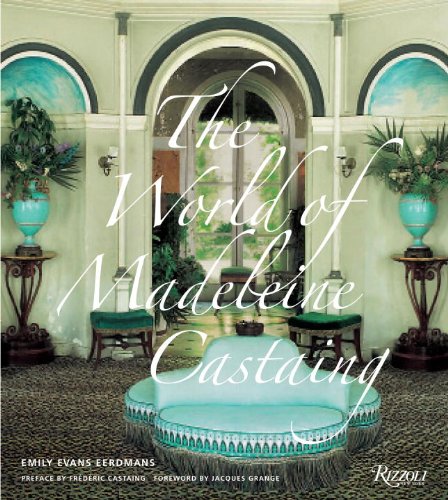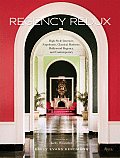When contacted by the inestimable Emily Evans Eerdmans with the request to write a guest piece about an interior that has inspired or influenced me the most, it was both a great honor and a predicament. Which to choose?
After a great deal of deliberation, I narrowed the list down to two that have most inspired and influenced the restoration and decoration I and my spouse have undertaken at Darlington House, our Federal-era country place in the Hudson River Valley.
The Grange and Hamilton House:
Jewels of the Early-Period Colonial Revival

Hamilton House today
The rooms I have selected are found in “The Grange” in Such interiors often would include a mix of furnishings from differing eras and countries of origin, not just from
It is important to distinguish this early period of the Colonial Revival from the later-period Colonial Revival, which evolved to become more strictly-focused on creating period-consistent interiors heavily influenced by the restorations at Colonial Williamsburg. All ball and claw.
The Grange
Lincoln, Massachusetts
Lincoln, Massachusetts

The Grange in the 1890s
Ogden Codman, co-author with Edith Wharton of The Decoration of Houses, is one of the greatest architects of the early-period Colonial Revival, along with McKim, Mead, and White. Codman’s work is thoroughly discussed in Pauline Metcalf’s able monograph Ogden Codman and the Decoration of Houses, a book that should be in every student of interior design’s reference library and takes pride of place in mine. 
Grange sitting room today
The Grange was built by the architect’s ancestors in 1740 as a country seat outside ofThe most iconic of these rooms, a sitting room, features its original paneling installed in 1740, painted white, and mostly (although not-exclusively) furnished with Louis XVI furniture and Chinese porcelain lamps. The same toile de Jouy is used throughout the room to upholster or slipcover the seating, and also as curtains.

Grange Sitting Room 1980s
Over 100 years later this room still appears fresh, light, and comfortable to me, and an ideal place to wile away a summer’s evening. It has had a profound influence on the decoration of our drawing room at Darlington House, where we have sought to capture a similar atmosphere with a mix of American Federal, Louis XVI, and English Regency furniture, along with Chinese and English porcelains.Hamilton House
South Berwick, Maine
Built circa 1785, Hamilton House was acquired by the comfortably-circumstanced Emily Tyson and her stepdaughter, Elise, in the 1890s as a summer retreat. They bought the house at the urging of their friend Sarah Orne Jewett, the author of The Country of Pointed Firs, who lived nearby. The Tysons embarked on a major restoration and renovation of the house and in so doing created one of the gems of the early-period Colonial Revival. The house sits in an idyllic setting, overlooking the Salmon Falls River, and it is noteworthy for the beauty of its situation, gardens, house, and interiors. The decoration of the rooms of Hamilton House, in particular its dining room, have influenced our work at Darlington. The dining room is noteworthy for its asperity.Hamilton House dining room
It is simply furnished with painted fancy chairs, plain mahogany furniture, and gilt mirrors. The floors are covered with rush matting. One of the most delightful aspects of the room is its walls, painted with classical Italian views in 1905 after the Tysons returned from a tour of
 These are rooms that I come back to again and again, both for their simplicity and their integrity, and I believe that there remains much to be learned from them today -- whether one is seeking to create interiors informed by the past or more modern ones rooted in contemporary living.
These are rooms that I come back to again and again, both for their simplicity and their integrity, and I believe that there remains much to be learned from them today -- whether one is seeking to create interiors informed by the past or more modern ones rooted in contemporary living.For more information on the Grange and Hamilton House: http://www.historicnewengland.org/ Reggie Darling’s updates on the progress at Darlington House can be found on his quite charming blog: http://www.reggiedarling.blogspot.com/













10 comments:
Oh No! The Hamilton House dining room was to be the lead room in one of my posts next week. It is, without doubt, one of the most wonderful rooms anywhere...
It's the early blogger who gets the dining room. Great post.
I don't know what there is about painted wooden pelmets but they never fail to charm me, and the dining room at Hamilton House is no exception. Why
don't we see more examples of this understated, and very practical, form of trompe l'oeil? Getting a real fabric swag to hang correctly, strikes me as far more daunting a task than painting an illusion of the same thing on a board. Less pretentious, too.
What I love about both these rooms is the utter calm & lack of 'decorator' touches. Everything is perfect, both in itself and in its context, but nothing is so perfect that it might draw unseemly attention to itself. It's the wonderful opposite of today's Wow Factor that's kept these rooms livable for over a century. Even the Italian landscape in the dining room stays in the background. The darkening of the paint over a hundred years may be a factor, but I'm guessing that the scene was always very sedate.
Great choices, Reggie.
I, too, was struck by the painted pelmet. While I am excessive-compulsive fabric lover, the painted form would be ideal for people whose allergies trump their love of fabric.
So love the mixing of styles in the period-ish. It's the decorating form of biodiversity in a garden. I think it takes the edge off "all ball and claw" and breathes both life and mystery into a room.
I do hope Reggie Darling is planing to make a book of his affair with Darlington House.
It's a typically magnificent romp through your mind, Reggie. I thank you and Emily for this visit; so well conceived, so beautifully sound in concept, so well remembered. Happy holidays to you both, this was a lovely Christmas gift for me.
What charming comments, indeed. Thank you!
Reggie
Two favorite houses! Joy!
I have been saying for ages that someone needs to do a book/exhibition on the uniquely American Colonial Revival...one of the most maligned and misunderstood of styles (I know, when it is done badly, it is BAD).
Reggie Darling, what a delight to find your blog!
Hamilton House's wall murals are quirky and fun. The house is full of interesting touches such as the woven grass floor coverings, the Audubon Owl print in the guest room, and the glass doorstops. Admirers of the Colonial Revival influence on 18th-century American houses will also love the Governor Langon House in Portsmouth, New Hampshire. In the early 20th-century, its owner hired Stanford White to build an addition and filled it with fine Portsmouth furniture.
FD, you are absolutely right, Hamilton House has a wealth of marvelous and intriguing touches. I was very taken with its blown glass doorstops, and I lust after them to this day. I've also seen the Governor Langdon House in Portsmouth, where, in addition to touring the public rooms we also enjoyed a behind-the-scenes tour of its service areas and attics, still full of the former owners' possessions.
What a wonderful house, and what a smart post. I'm confused, however, by the author's use of the word "asperity" to describe the dining room. "Asperity" strikes me as a pejorative, calling to mind rigor and severity, but also rougness and unevenness--not qualities I see in the room. Do I misread Reggie Darling's meaning? Is "austerity" closer to the mark?
Post a Comment